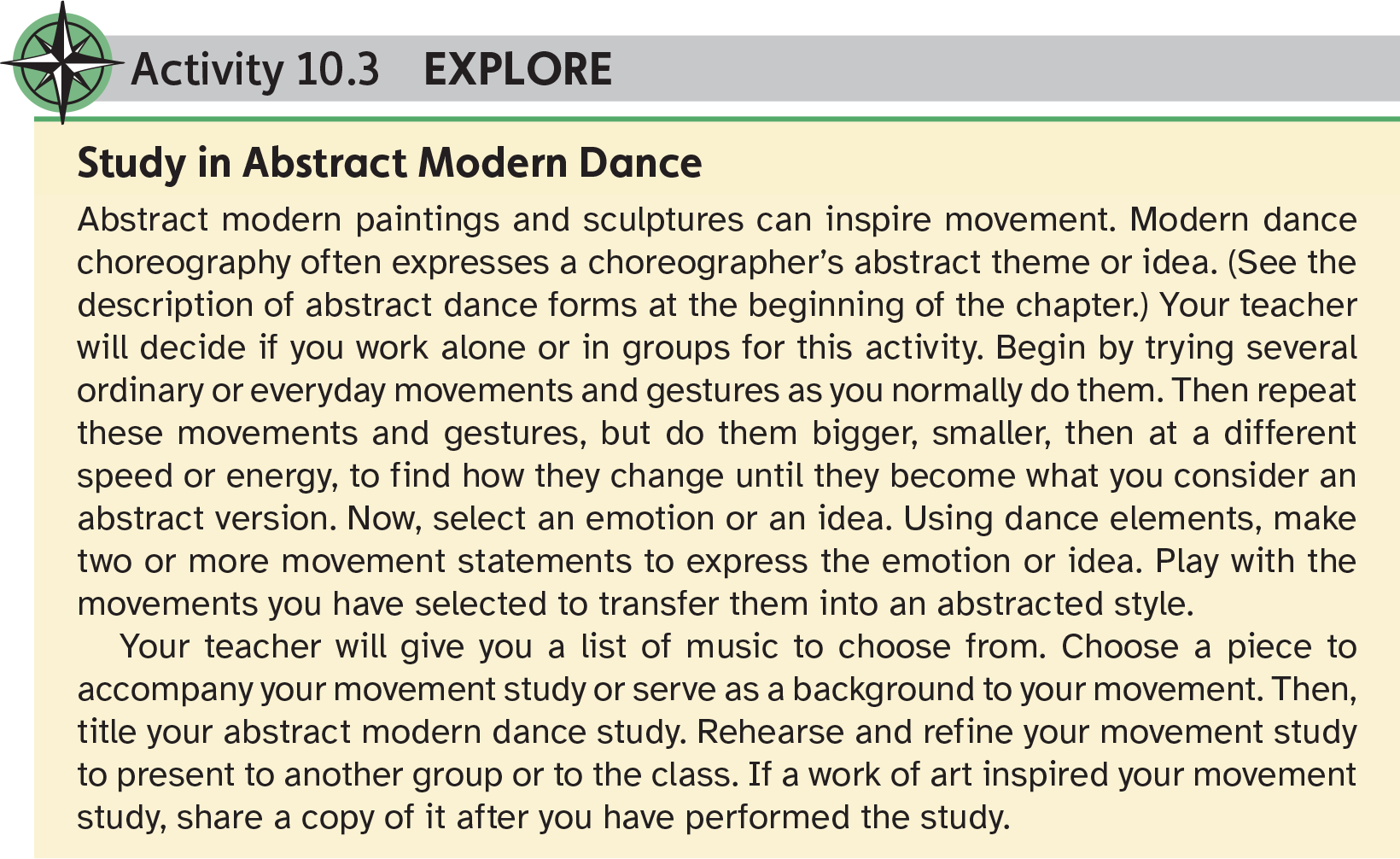Exploring Modern Dance
This is an excerpt from Discovering Dance 2nd Edition by Gayle Kassing.
Modern dance includes many possibilities for expression. The combination of dance elements the dancer or choreographer chooses and how they express the movement makes this genre challenging for those creating it and intriguing for those watching it. The movement expressions may be the movement itself or deeply felt emotions, ideas, concepts, or personal statements the choreographer wants to share with others—both dancers and audiences. Other inspirational modalities for movement come from music, a story, a painting, another work of art, or life experiences.
When creating modern dance choreography, you must have a choreographic concept for the work that you can communicate to the dancers so that they can understand and interpret the movement. Some choreographers provide large amounts of movements and expect dancers to figure out how to make the movements into an integrated whole. Other choreographers provide a framework and have dancers create the detailed movements in the infrastructure.
Before you begin to create or perform modern dance choreography, you need to know what type of choreographic structure you are working with. Modern dance works can be categorized into these types:
- Story-based or dramatic work: Modern dances can retell myths or stories, such as those from literature or dramatic works. This type of dance may present events in sequence, or the choreographer can use literary devices to change, compress, or extend some of the story events within a dramatic structure. Early modern dance choreographers created works of this type.
- Abstract forms: Abstract modern dances use ideas, themes, and emotions, and personal or social statements as the basis for a choreographic work. Many postmodern and contemporary modern dances are abstract works.
- Eclectic themes: Some abstract dances focus on movement in relation to the music or movement as the message in the dance, and audience members interpret their own meaning of the dance work.
- Improvisational forms: In its simplest form, improvisation is spontaneous movement. Some improvisational works begin with a framework, a concept, or a problem to which the dancers respond. They create movement and relationships to explore the concept or solve the problem. The semistructured improvisation begins with dancers doing improvisational movement explorations. Then the choreographer chooses certain movement sequences or compositional poses to include in the work.
- Chance: A series of random movements selected by chance contribute to a type of modern dance called chance dance. Movements are selected from an extensive modern dance vocabulary or from a choreographer’s style. The choreographer or the dancers determine the movements chosen by various methods and put them in a sequence. Then, dancers perform their movements beginning at various times and end their movement sequences at different times to create an event focused on pure movement.
These choreographic structures have evolved as modern dance has developed through history. The following section guides you through that history.

SHOP

Get the latest insights with regular newsletters, plus periodic product information and special insider offers.
JOIN NOW
Latest Posts
- Authenticity was key to McKinney’s NIL success
- AI—A new tool for sport PR pros
- Essential skills for sport PR practitioners
- Employ these tactics when pitching a story to the media
- How does ergonomic analysis and intervention enhance safety and reduce injury risk?
- Common movement patterns in competitive cycling


